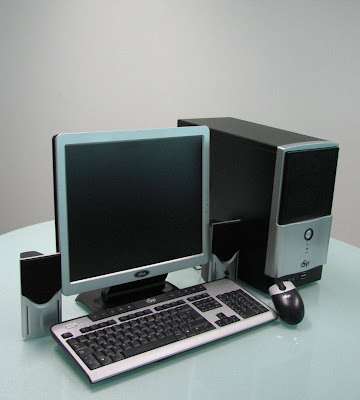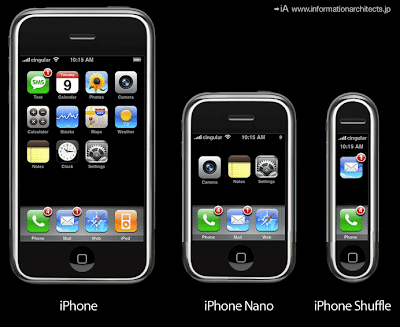
Introduction
In this tutorial I will try an teach you how to successfully build your own computer! There are many benefits to building your own computer.
1. You get hand's on experience learning how a computer works
2. Its a hell of alot less expensive then buying one from a retailer
3. Its a hell of alot more reliable than buying one from a retailer being that you hand select QUALITY parts and put it togethor yourself.
4. You can do your own tech support no more relying on stupid Best Buy Tech's that don't know the difference between their ass and a hard disk jumper (don't worry I'll tell you what those are later)
Section #1 (What Your Going To Need)
Here we will discuss a list of the parts you need and the best place to purchase them. If you want the best
prices on computer hardware you will definitly want to look online. Unfortunatly (and for some of you very fortunatly
if you know what I mean) this requires the use of a credit card. Below is a general list of the devices you will
need...
1. A Computer Case (Something To Put All The Computer Parts Togethor In)
* Should only run you about 50 dollars
* Beware the cheap ones with cheap power supplies they will die in a year
2. A Mother Board (Everything Will Be Plugged Into The Mother Board)
3. A Floppy Drive and a CDROM (Should Be Obvious)
4. A Hard Disk (Come In Many Different Flavors and Quality Levels, Stores All The Information In Your Computer)
5. A Video Card (Cheap Stuff, Its What Your Monitor Plugs Into)
6. IDE Controller Ribbon
7. Miscellaneous Accessories
Next we'll take a look at many of the different options you have when buying these pieces of equipment. Your choice
may vary depending on which Operating Systems you plan on running.
Section #2 (Which Brand And Model Should I Buy?)
We'll lets start with your computer case and move all the way down to Miscellaneous Accessories..
1. Computer Case
You will most certainly need an ATX style case with a quality power supply. How do you tell? Well if the case
is only 15-20 bucks theres a pretty good chance its a crappy power supply.
2. A Mother Board
I suggest a quality ASUS (ATX style to match your computer case) mother board its up to you ask your friends.
I've had bad experiences personally with FIC
mother boards.
3. A Floppy Drive and CDROM
Pretty inexpensive stuff, i'd suggest a Sony Floppy drive and a generic CDROM. Doesn't make too much a difference if your
concerned about getting the best price.
4. Hard Disks
Gets alittle tricky. If you want reliability, high speed transfers, and are willing to run Windows I suggest a Western Digital
or a Seagate ULTRA DMA-66. If your not to concerned with speed and want to run a server with Unix i'd go with a Fujitsu or
a Western Digital. Their farely inexpensive but only transfer in 33 megabit bursts as apposed to the DMA-66 which transfer
in 33 megabit bursts. I don't believe Unix currently supports ULTRA DMA-66, but don't quote me on that. Now there's an even faster
transfer rate available via SCSI Hard Disk Controllers, but i'm not about to go into setting up SCSI controllers in this tutorial.
For now we will stick with IDE Hard Disk controllers.
5. Video Cards
Video cards are cheap and if your not a gamer a plain ole gener Cirrus Logic or STB video card will do fine.
6. IDE Controller Ribbon
You'll need 2 different kinds of IDE Ribbon 2 40 pins for your CDROM and Hard Disk and Another with less pins for your floppy.
You can buy these at any local computer store or order them off the web.
7. Miscellaneous Stuff
You may be interested in adding a sound card, ethernet card, and/or 3DFX card to your system. These are relatively easy to do and
I will explain how to add card's to your mother board later.
Section #3 (Where do I buy all this crap!?)
Well if your looking for the best prices online for computer hardware (and this is my unbiast opinion) i'd suggest going to
|
| http://www.pricewatch.com |
Section #4 (Lets Assemble!)This next part is very important so read carefully...
1. First things first get yourself a clean desk to work on.
2. Place your ATX stlye computer case on the desk and slide/lift the top off. Inside should be a bunch of wires coming out
of the power supply in the back and a bunch of wires coming out near the face of the box.
3. The next thing your going to want to do is place your mother board inside the case and fasten it in. Their might be
metal coverings covering the holes in the computer case were the parralel ports and serial ports on the mother board
should poke through, go ahead and poke those out with a screw drive so you can fit the mother board in snuggly. Every
Case fastens mother boards in different ways. Some use plastic pegs, some use metal screws. It will hopefully be obvious
which you have to use.
4. #4 Once the mother board is mounted properly you will need to fasten the floppy drive, and cdrom into the computer case.
All computer cases store floppy drives differently there maybe a slide out container that you screw them into. You'll
have to make sure that the the floppy drive is right side up (duh!) and that the pins are facing towards the back of the
computer. Installing the CDROM is pretty much the same in all computer cases. Some mounting rails should have come
with your mother board. You need to fasten those to the sides of the CDROM and you should be able to slide it right in
to one of the top bays.
5. Insert your Video Card. There are presently about 3 differnet forms of slots on your mother board. PCI, ISA, and AGP.
Video Cards are presently made for all 3 of them. AGP stands for "Accelrated Graphics Port" Video Cards made for this
slot are generally more high tech/performance. PCI's work and so do ISA (Althoug ISA is more Old School). Gee how
do I tell the difference? Well AGP slots more than likely is the only small, brown, slot on your mother board. PCI
you probably have the most of these their white and little longer than AGP. ISA, these are longggg and black, ugly.
Insert your Video Card and snug it in there firmly. Don't force it (duh).
6. Time for that evil Hard Disk installation. We'll Hit hooking up the power supplies and Installing the Hard Disk at the
same time just for fun. Insert the Hard Disk In a very much similar way to the way you inserted the floppy disk. But
Before you do make sure that the jumper settings are correct on the back of Har Disk. Most hard disks are shipped in
single mode, but if you want to run multiple hard disks (which we won't discuss) you need to set the jumpers differently.
Jumpers are little metal prongs connected with little jumpers that complete a connection. You figure it out. Anyway
you got your hard disk in now its time to hook up the power supplies. The hard disk and the CDROM have similar power supp
lies. 3 or 4 prong. Hook those funny looking cords coming out of the back of the power supply into your CDROM and Hard
Disk. Theres a smaller one that hooks into your floppy it should be obvious. Theres a big power supply (the biggest one
in the lot usually made of white plastic) It fits into a slot on your mother board, it is the main power supply to your
mother board. Its kind of tricky to get in so be careful.
7. Now that you have your Power Supplies hooked up you'll need to connect your Periphrials to your Mother Board. Use the IDE
Controller Ribbon I know you all have. Hey one end goes to your CDROM (make sure the red line on the ribbon "pin 1" is
matched up with the first pin on the back of your CDROM) and the other end goes to your mother board (same deal). The
same goes for your hard disk and yoru floppy. Figure it out its not that difficult. You'll know you did something wrong
when you get a floppy disk fail on boot.
8. Finishing touches. Don't forget to connect those nasty wires coming out from behind the face of your computer case to
your mother board. They control the on, off, reset, hard disk activity, and power switch. Every mother board is different
so i hope you have a manual with your mother board. Most specify with 2 or 3 character paraphrases that make no sense.
For Example "PWR SWT" = Power Switch "RST SWT" = Reset Switch. Or even more vague than that.
Section #5 (Testing 1, 2, 3)Ok your ready to give it a whirl, you'll need to get in your system bios. The "DEL" key should usually get you in.
Get it to autodetect your hard disk. Accept the Setting and Save your Configurations. Install Your OS and your ready to go.
That easy!! Ha! you'll prolly have lots of trouble theres a million resources online to help you. Get to it.













